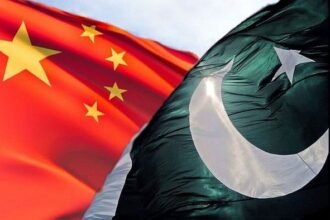
By Faiza Riasat
Student of NUST, Environmental Engineering IESE
Pakistan is experiencing its hottest and most extreme summer of the decade, with temperatures soaring close to 50°C across multiple areas of the country. Entire cities have transformed into scorching heat zones, triggering widespread health emergencies, straining energy infrastructure, and deepening water scarcity.
This crisis is not a natural occurrence, but the result of years of unchecked environmental degradation that have pushed the climate system to a breaking point. What was once considered an anomaly is now becoming an alarming new norm.
In the first half of 2025 alone, Pakistan has been struck by two major climate-related disasters: an extreme heatwave in Sindh and a devastating glacial lake outburst flood (GLOF) in Gilgit-Baltistan. The heatwave pushed temperatures in Jacobabad beyond 52°C, while the GLOF wiped out entire communities in Hunza Valley, displacing thousands.
Since April 2025, a series of intense heatwaves have struck Pakistan, with June bringing the most brutal temperatures. Dera Ghazi Khan recorded highs of 50°C, while Lahore, Sargodha, and other urban centers soared around 47°C to 49°C. Even regions like Gilgit-Baltistan and Khyber Pakhtunkhwa, historically known cooler zones, have reported unseasonably high temperatures.
Countless factors contribute to the single, predominant challenge of climate change. While Pakistan battles record-breaking heatwaves and growing climate instability, it’s important to acknowledge a harsh truth: the country is suffering the consequences of a crisis it did not create.
Despite contributing less than 1% to global greenhouse gas emissions, Pakistan faces some of the most devastating impacts of climate change. Pakistan’s climate change vulnerability is deeply linked to its geography.
Pakistan lies at the crossroads of melting glaciers, arid zones, and low-lying coastal areas. The Intergovernmental Panel on Climate Change (IPCC, 2021) places Pakistan among the ten most climate-vulnerable countries.
Global warming, which is driven largely by industrialized nations, has raised baseline temperatures around the world, setting the stage for more frequent and intense heat events. Shifts in atmospheric patterns, including high-pressure systems that trap heat, further exacerbate the problem.
In Pakistan’s rapidly expanding cities, heat is magnified by the urban heat island effect, as concrete structures and reduced green cover retain and radiate warmth. Meanwhile, widespread deforestation and soil degradation leave the land dry and unable to cool naturally.
Adding to the crisis is a fragile and overburdened power system that often fails during the hottest parts of the day, cutting off electricity to millions. Without reliable power, many households are left without fans, air coolers, or even access to clean drinking water when they need it most.
The human cost of the heatwave is staggering. Hospitals in Sindh, Punjab, and Balochistan have reported surges in cases of dehydration, heatstroke, and heat-induced miscarriages. Outdoor laborers, street vendors, and elderly residents are at high risk, with minimal access to cooling centers or relief services. In 2024, over 568 heat-related deaths were recorded during a similar period, and current trends suggest a repeat of that grim statistic.
In response to the intensifying heat, authorities and humanitarian organizations have set up over 1,000 heat relief camps in high-risk areas, offering water, shade, and first aid. Public advisories encourage people to stay indoors during peak heat hours, while hospitals have opened dedicated heatstroke counters.
Despite these efforts, gaps in access, medical supplies, and public awareness remain, particularly in low-income and remote communities.
While emergency responses provide short-term relief, long-term resilience depends on integrating sustainable urban planning, efficient water and energy management, and climate-conscious infrastructure.
Expanding green spaces, strengthening early warning systems, adopting heat-resilient building designs, and ensuring social protections for vulnerable groups are critical to reducing future risks. These measures, combined with international support and climate finance, are essential for Pakistan to adapt to a hotter, more unpredictable future.
The climate catastrophe facing Pakistan is no longer hypothetical; it is a present-day emergency. The events of 2025 should erase any remaining doubts about the urgency of the crisis. Heatwaves, glacial floods, and displacement are not rare events; they are becoming the new normal.
Pakistan’s battle with deadly heatwaves is a stark reminder that climate change knows no borders and demands urgent, unified action before survival becomes the exception, not the norm.
If Pakistan fails to act decisively now, it risks spiraling into a future of perpetual recovery, where every season brings devastation, and every year resets developmental progress. The era for preparedness must begin today.










